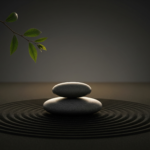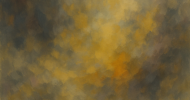“To practice medicine,” a mentor once told me, “is to live with the tension between what you can do and what you should do.”
I didn’t understand him then. I do now. It is two in the morning in a Chicago hospital. The unit hums with fluorescent fatigue. A man in his fifties lies gasping for air, his lungs crowded by metastatic cancer. His chart lists “full code.” His daughter, sobbing through a flickering phone screen, says, “Do everything.”
You know what “everything” means: compressions, shocks, and a choreography of violence disguised as care. You know that none of it will restore life, only prolong dying. And yet you proceed, because the chart, the protocol, and the culture all insist that you must.
You perform what the system demands and betray what your conscience knows. Something in you splinters, quietly, invisibly.
This is moral distress: the suffering that comes not from ignorance or doubt, but from knowledge. It is the anguish of recognizing the right course and being unable to act upon it. It is the soul’s protest against a machinery that mistakes motion for meaning.
We have learned to name our exhaustion as burnout. But burnout, for all its diagnostic neatness, describes the surface, not the depth. It measures depletion, not distortion. It assumes that the problem lies in individual stamina, not in the ethical structure of the work itself.
Moral distress, by contrast, speaks in the language of conscience. First described by Andrew Jameton, it captures the peculiar torment of clarity without agency. One is not confused but constrained: an agent reduced to instrument, a witness made complicit. Over time, such moments accumulate into what philosophers call “moral residue,” the scar tissue of unacted conviction. We learn to anesthetize the wound, to mistake numbness for resilience. We survive by forgetting.
Residency trains us in this forgetting. The hidden curriculum is not written in syllabi but in the daily choreography of compliance. Between sign-out and sunrise, we absorb lessons in moral silence: how to speak in euphemism, how to obey without conviction, and how to call futility “standard of care.”
We are told this is professionalism. But often it is submission dressed as prudence. The young physician learns to navigate the moral terrain not by discernment, but by adaptation, to endure the dissonance between medicine’s ideals and its institutional realities. The result is a subtle erosion of moral identity. The apprentice healer becomes, quietly, a technician of suffering.
Yet moral distress is not simply the residue of personal fragility. It is the symptom of structural disorder. Systems organized around throughput, liability, and revenue inevitably distort the moral grammar of care. They ask physicians to uphold values they simultaneously undermine: compassion without time, presence without space, and integrity without autonomy.
We are told to practice evidence-based medicine, but the evidence that matters most (the lived experience of the patient, the moral intuition of the clinician) rarely fits the algorithm. We are asked to see 20 patients in a day and to call it “continuity.” We discharge the uninsured diabetic with “lifestyle advice” because there is no affordable insulin, and we document that the plan was “discussed.” We know this is inadequate. We know it is unjust. Yet we must move on, because the schedule allows no time for moral grief.
This is how systems convert ethical labor into emotional labor, outsourcing their contradictions to the clinician’s conscience. The suffering becomes interiorized, privatized, rendered invisible.
To confront this, medicine must recover a philosophy of limits. The ancient virtue of phronesis (practical wisdom) rests on the recognition that to heal is not to conquer, but to accompany. Yet our culture of mastery confuses intervention with care. It worships capability while fearing vulnerability, as if to accept finitude were to admit failure.
But the physician’s task has never been omnipotence. It has been discernment: to know when to act, when to refrain, and when to bear witness. The refusal to acknowledge limits is not strength; it is hubris. And hubris, in medicine, often masquerades as heroism.
Moral distress, then, is not pathology. It is conscience persisting in captivity, a sign that the moral imagination has not been extinguished. It is, paradoxically, a measure of integrity.
What would it mean to turn moral distress from a source of corrosion into a catalyst for renewal? It would mean reimagining professionalism not as obedience but as courage: the disciplined articulation of one’s moral reasoning even within constraint. It would mean creating spaces within institutions for genuine moral dialogue, not just debriefing after harm has occurred. Ethics must not visit the ward like a consultant; it must inhabit it as a way of seeing.
It would mean teaching trainees not merely to follow rules, but to reason about the good, to trace how values, policies, and power shape each clinical decision. And it would mean recognizing that payment models, documentation systems, and regulatory metrics are not neutral instruments. They are embodiments of moral priorities. Reforming them is ethical work, not administrative housekeeping.
To practice medicine well, in this sense, is not only to care for bodies but to tend to the conditions under which caring itself becomes possible.
Moral distress will never vanish entirely; nor should it. To feel distress is to remain awake to the moral dimension of one’s work. The danger is not that we feel too much, but that we cease to feel at all. The true crisis in medicine is not exhaustion; it is amnesia.
The task before us is remembrance: to remember what medicine is for, and what kind of person one must become to practice it rightly. To remember that care without conscience is not care, and that no amount of efficiency can redeem a system that forgets its own moral purpose.
Every act of moral clarity (however small) is a form of resistance. Every refusal to normalize the absurd is an act of fidelity. In the end, the hope for medicine lies not in resilience, but in reawakening the moral imagination that first drew us here.
We cannot heal what we will not name.
And we cannot be whole while our institutions reward fragmentation.
The work ahead is not only clinical or systemic; it is moral.
Sami Sinada is a family physician in Chicago. He examines how ethics and policy influence everyday clinical decisions and the systems that shape them. His work aims for clarity, conscience, and practical wisdom in primary care and medical education.




















![Rebuilding the backbone of health care [PODCAST]](https://kevinmd.com/wp-content/uploads/Design-3-190x100.jpg)
